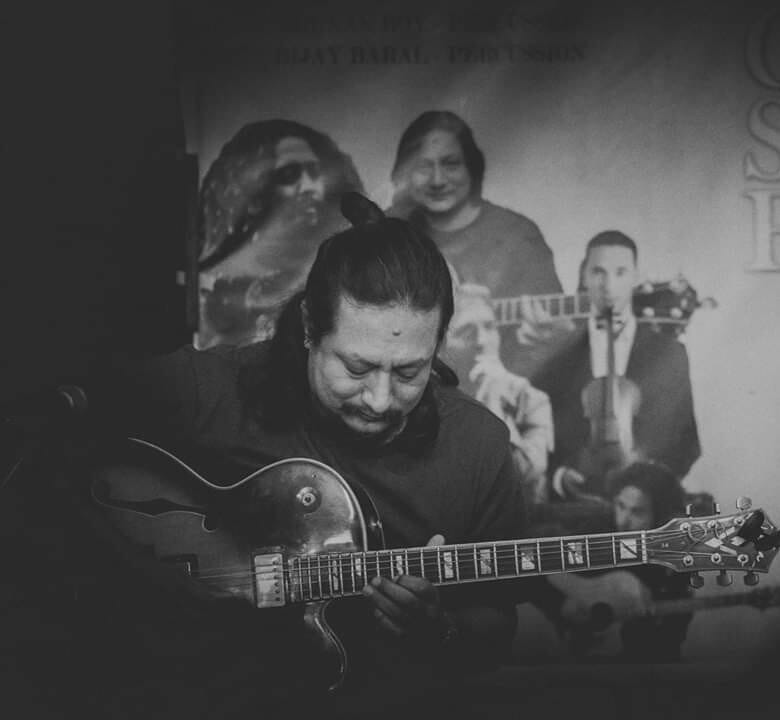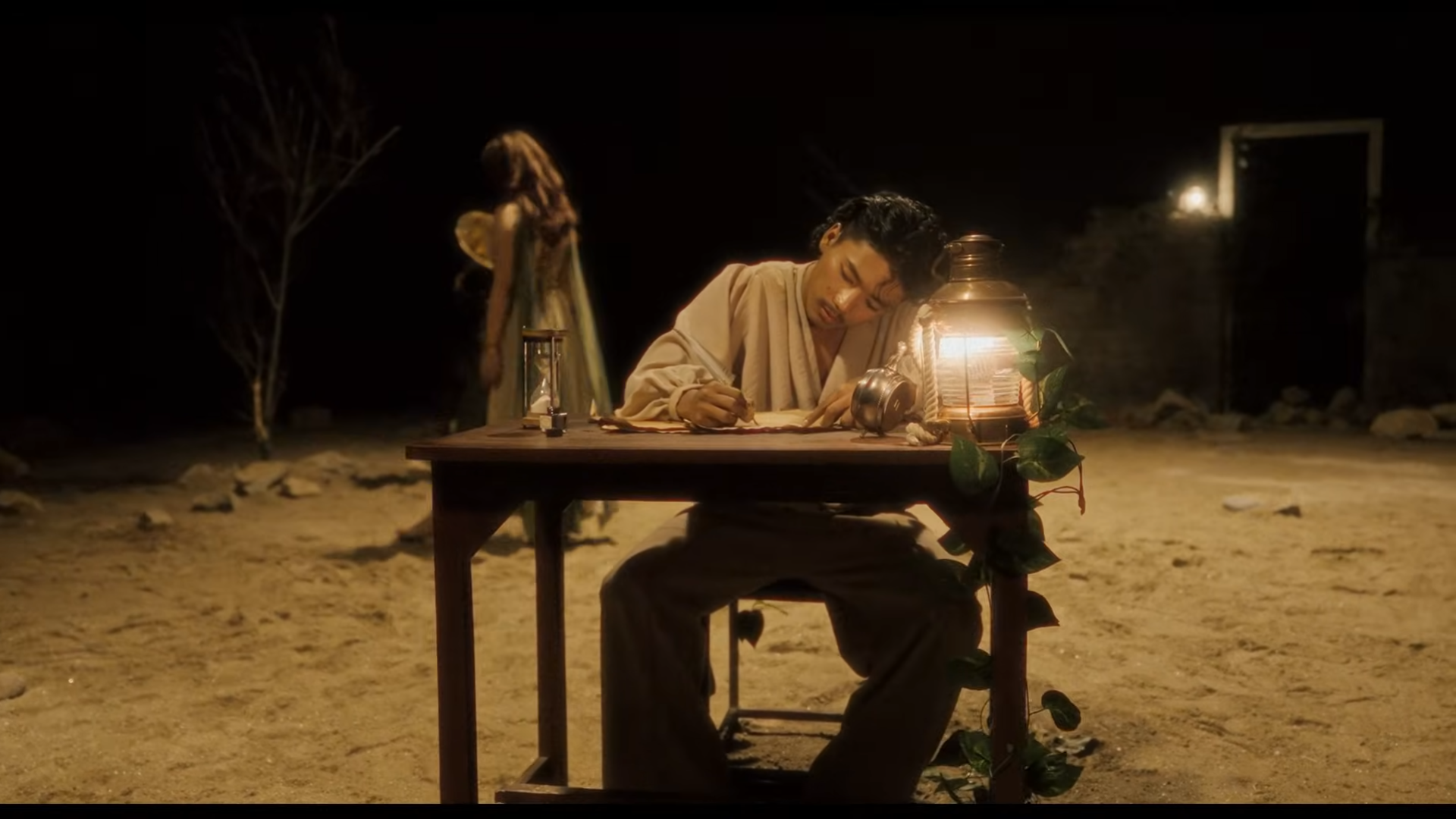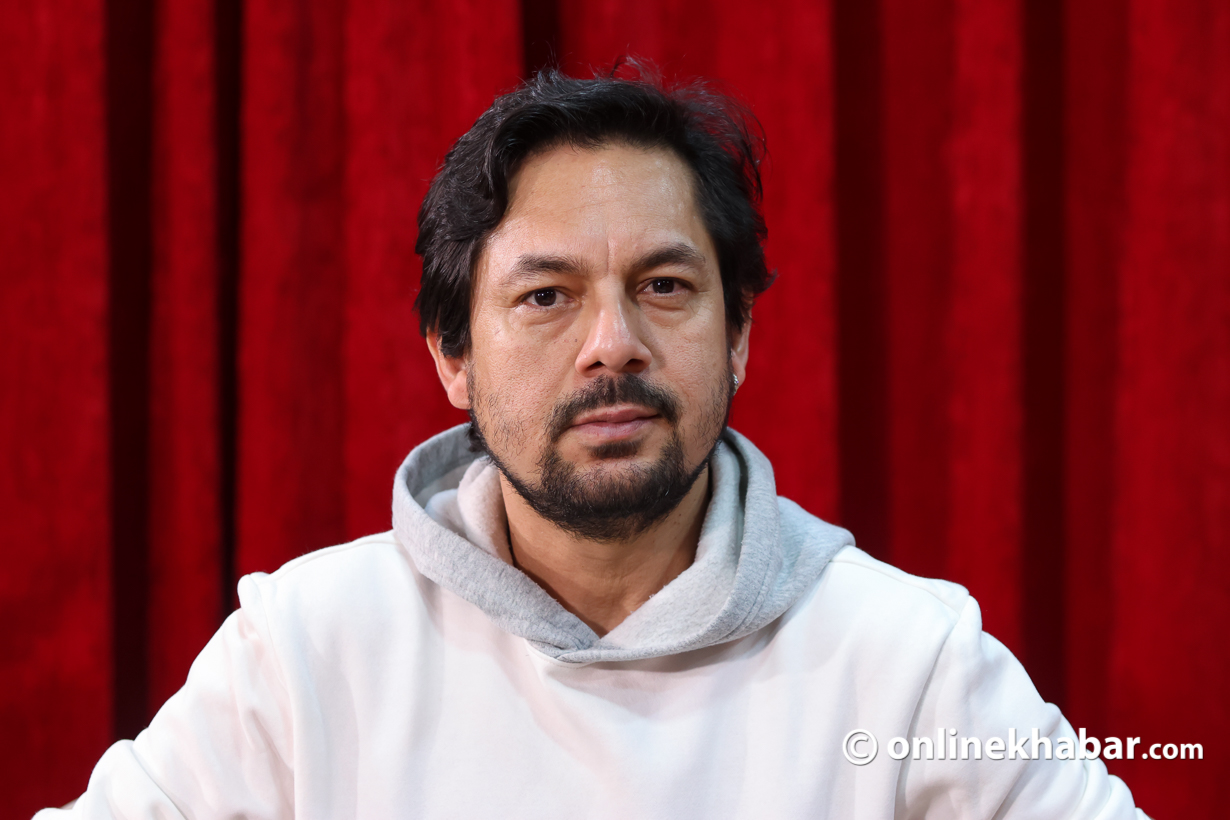
Born and raised amid the hustle and bustle of Kathmandu, Hari Maharjan was introduced to music at a young age. The prevalent tradition of learning traditional musical instruments within the Newa community exposed Maharjan to different instruments and sounds during his early years. But for some reason, he took up a guitar and has since been hailed as a trailblazer in the Nepali music scene.
“I don’t remember the first time I picked up a guitar. But the thing that fascinated me about guitar was how it looked,” says Maharjan.
Soon, he discovered the beauty and intricacies of the guitar, realizing its potential for melodic, harmonic, and rhythmic expression, and he became utterly hooked.
“Playing guitar changed my way of thinking. Because of the versatility the guitar holds, it enhanced my creativity level.”
Hari Maharjan stands out as one of the most prominent guitarists in the Nepali music industry. He has been in the industry for over three decades. In Nepal’s music scene, sustaining a career for as long as Maharjan has is a rarity but he has been ever-present continuing to evolve himself with changing times.
In his long career, Maharjan has collaborated with bands like Karma, Nepathya, Robin and the New Revolution, and Kandara. His distinctive riffs, featured in many timeless songs, have gained popularity on par with the songs themselves. Additionally, Hari Maharjan is also acknowledged as a trailblazer in introducing gypsy jazz to Nepal.
Encounter with Karma and Nepathya

As Maharjan consistently played the guitar and refined his skills, he became involved with several local bands, some of which he could not even recall by name. In the late 1990s, however, a significant opportunity arose for him to collaborate with Karma on one of their most renowned albums, Hukka Mero.
Maharjan’s long-time friend Surendra Man Singh, vocalist of Karma, was looking for someone who could perfectly delve into their composition and vibe with the band. Singh approached Maharjan, and they started jamming and the rest is history.
Maharjan’s guitar riffs in the classic track Hukka Mero garnered significant attention within the music community of that time. Not only did fellow musicians take notice, but he also started gaining recognition from the broader audience.
While he was enjoying his time with Karma, another opportunity came knocking in the form of folk rock band Nepathya.
During that time, the country was grappling with an insurgency, and Nepathya was gearing up for their tour Sundar Shanta Nepal. This tour was dedicated to liberating the country from the cycle of conflict. Additionally, they organised the Shanti Ko Lagi Shikshya tour, which focused on eliminating the intervention of armed individuals in schools.
He was sold on the project, took a break from Karma and joined Nepathya.
“Both of those tours were for the betterment of a country and it was a great opportunity for me to serve the country as a musician, ” says Maharjan.
Hari Maharjan gained significant popularity through his guitar contributions to Nepathya, particularly in hit songs like Taal Ko Pani, Sa Karnali, Bheda Ko Oon Jasto, and more. During his time with Nepathya, Maharjan collaborated on five albums, spanning eight years.
Inception of Hari Maharjan Project
While he had fun playing with different bands, Hari Maharjan yearned for something he could call his own. He knew he was good enough as did his friends and contemporaries who asked him to do something on his own which would be new to the Nepali music industry and a platform for him to compose his original piece independently. That eventually motivated him to start the Hari Maharjan Project (HMP), Maharjan’s musical project that features instrumental songs, in collaboration with various artists.
So far, HMP has released three albums; Kalakarmi in 2008, Sudhina in 2013 and Going into three in 2020.
Through HMP, Maharjan aims to highlight that a song is not only complete with the contributions of the singer, lyricist, and composer but that instrumentalists play an equally crucial role.
Presently, HMP operates under a new management team. Maharjan mentions that HMP has several exciting projects in the pipeline, all set to be unveiled soon.
“HMP has collaborated with various local instruments and in future as well with a motive to take our local instruments and music to a global level, this will continue,” says Maharjan.
Connection with gypsy jazz

Maharjan had been involved with gypsy jazz for an extended period, yet it took him a while to recognise that the music he had been playing was indeed called gypsy jazz.
His introduction to this genre happened serendipitously during impromptu jam sessions with foreigners in Kathmandu, and exposure to random music at the time. It was only as his proficiency in this style developed that he became aware of the specific genre he had been performing. He was so hooked, he even went to France to a crash course on it.
“Atla Music University in France taught me a lot about gypsy jazz. After that I started using it in songs too,” he says.
The impact of gypsy jazz is evident in many of Maharjan’s compositions, including popular songs like Hukka Mero and Taal Ko Pani.
Learning from others
Along with Karma and Nepathya, Maharjan has experience collaborating with various other artists such as Robin and the New Revolution and Kutumba. Similarly, he has also collaborated with international artists like Arko Mukherjee and the Swiss artist Alice.
Currently, Maharjan is working as a guest artist with the classic pop band Kandara. One of the songs, Bichara Ma, where Maharjan has collaborated with a band, is already out on YouTube.
He says every time working with a new artist is like experiencing new sounds, and feelings. It is also an important factor for him to increase his creativity level.
“If a musician wants to see growth in themselves, they must collaborate with various artists,” says Maharjan. “They never stop exploring new sounds.”


























